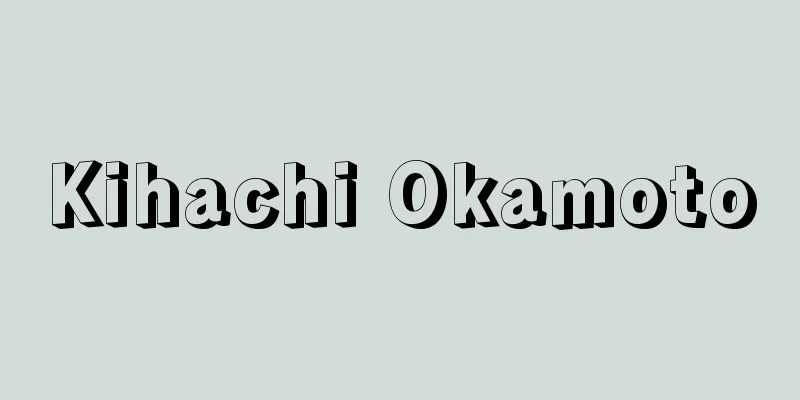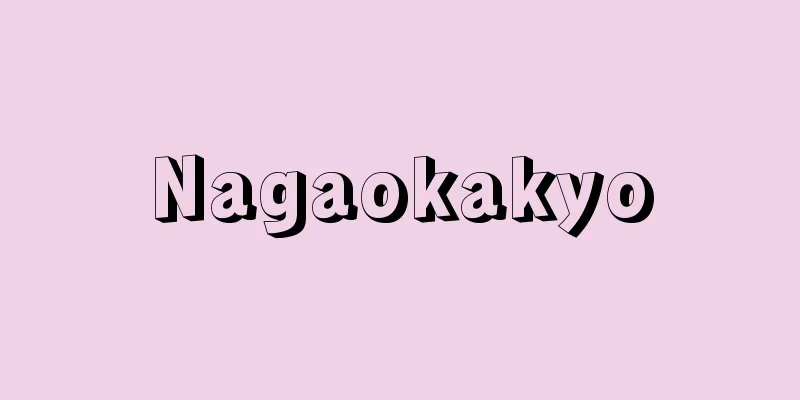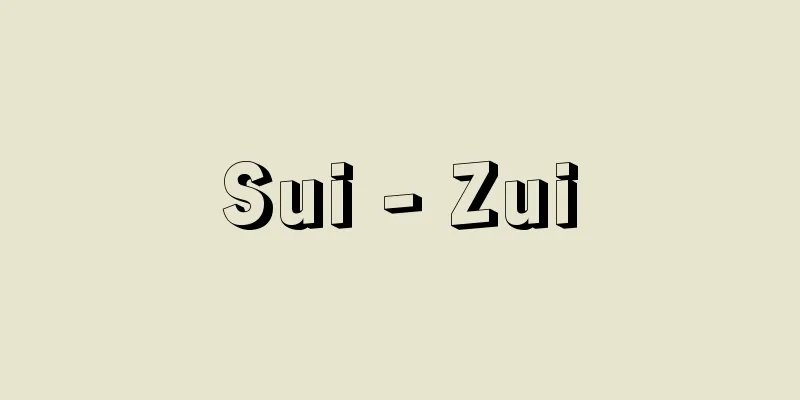Kihachi Okamoto

|
Film director. Born in Yonago, Tottori Prefecture. Real name Kihachiro. Enrolled in the business department of Meiji University in 1941 (Showa 16). After graduating in 1943, he joined Toho as an assistant director. After being conscripted into the military, he returned to work immediately after the end of World War II and studied under Mikio Naruse, Senkichi Taniguchi (1912-2007), Masahiro Makino and others. In 1958 (Showa 33), he was promoted to director with "All About Marriage," a light-hearted youth comedy that won him the NHK Best New Director Award. He was already entrusted with the New Year's film of 1959 with his third action film, "Boss of the Underworld," and was in charge of the first New Year's film for three consecutive years with "Duel in the Underworld" (1960) and "Bullet Holes in the Underworld" (1961). His own screenplay, "Independent Foolish Corps" (Scenario Writers Association Award), which led to his promotion to director, was made into a film in 1959. Set on the North China front near the end of the war, it depicts a security force made up of dropouts from various units of the Japanese army in a Western style. It was highly praised as a scathing parody of war movies, and was followed by "Independent Foolish Corps Going West" (1960). His most famous work, which everyone agrees is "The Elegant Life of Mr. Eburiman" (1963), based on Yamaguchi Hitomi's Naoki Prize-winning work, depicts the gap between the "last wartime generation" salarymen and the postwar generation that led the high economic growth period in a comical yet modern way. The musical "Aa Bakudan" (1964), which includes a parody of yakuza movies, also shows the pinnacle of Okamoto's comedy. He was also highly respected by star actors, and demonstrated his talent as an entertaining action director in such films as Mifune Productions' Samurai and Blood and Sand (both 1965), Red Hair (1969), and Zatōichi and Yojimbo (1970), starring Toshiro Mifune and Shintaro Katsu. He also worked on socially conscious works such as Toho's 35th anniversary masterpiece The Longest Day (1967), which won the Minister of Education Award at the Arts Festival, while actively branching out into experimental low-budget art films. In 1968, he partnered with the Art Theater Guild (Japan Art Theater Guild, founded in 1962 to produce and release domestic and international art films) to independently produce Nikudan (Nikudan), which won the Minister of Education Award at the Arts Festival, the Mainichi Film Awards Director's Award, and the Scenario Writers Association Award in succession. In 1975, he founded Kihachi Productions, and in partnership with ATG, he produced the highly acclaimed independent films Tokkan (1975) and Lately, Why Does Charleston Work? (1981). In between, he responded to offers from various companies and worked in a wide variety of genres, from period dramas and yakuza stories to science fiction, and his film The Great Kidnapping (1991) won him the Japan Academy Award for Best Director and Best Screenplay, and was a box office success. Okamoto had been inactive for a while since East Meets West (1995), a western about a Japanese samurai who travels to America to fight villains, but in 2002 he directed Sukeroku the Helper, a thrilling and entertaining period drama that didn't make you feel his age of 78, proving that his energetic and light-hearted "Kihachi touch" is still alive and well. In 1989, he was awarded the Purple Ribbon Medal, and in 1995, he was awarded the Order of the Rising Sun, Fourth Class, Gold Rays with Rosette. [Tsuneishi Fumiko] Documents List of Director's Works All About Marriage (1958) "Kihachi Okamoto's Storyboard Book: Draw, Erase, Draw, Erase" (1984, Atelier Publishing)" ▽ "Local Train Kiha 60: A Record of a Young Filmmaker Pursuing His Dreams" (1987, Kosei Publishing)" ▽ "Kihachi Four Beat Artisan: The Complete Works of Kihachi Okamoto" (1992, Toho Publishing Division)" ▽ "EAST MEETS WEST Storyboard Collection" (1995, Fusion Product) [References] | | | |Source: Shogakukan Encyclopedia Nipponica About Encyclopedia Nipponica Information | Legend |
|
映画監督。鳥取県米子(よなご)市に生まれる。本名喜八郎(きはちろう)。1941年(昭和16)明治大学専門部商科入学。1943年に卒業後、東宝入社、助監督となる。徴用、徴兵を経て第二次世界大戦終結後すぐに復職し、成瀬巳喜男(みきお)、谷口千吉(1912―2007)、マキノ雅広などに師事。1958年(昭和33)『結婚のすべて』で監督昇進、軽妙な青春喜劇に仕上げてNHK最優秀新人監督賞を受賞。第三作目の活劇『暗黒街の顔役』で早くも1959年の正月作品を任され、『暗黒街の対決』(1960)、『暗黒街の弾痕(だんこん)』(1961)と3年連続で正月第一作を担当した。監督昇進の契機ともなった自作脚本『独立愚連隊』(シナリオ作家協会賞)は1959年に映画化。終戦近い中国北支戦線を舞台に、日本軍各隊の落ちこぼれを集めた警備隊を西部劇スタイルで描いたもので、戦争映画の痛烈なパロディとして高く評価され、続いて『独立愚連隊西へ』(1960)も製作された。自他ともに認める代表作は、山口瞳の直木賞受賞作品に材をとった『江分利満(えぶりまん)氏の優雅な生活』(1963)で、「最後の戦中派」であるサラリーマンと、高度成長期を担う戦後派世代との断絶をコミカルかつモダンに描いた。やくざ映画のパロディを盛り込んだミュージカル『ああ爆弾』(1964)も岡本喜劇の到達点を示している。 スター俳優からの信望も厚く、三船プロ作品『侍』『血と砂』(ともに1965)、『赤毛』(1969)、三船敏郎と勝新太郎が競演した『座頭市と用心棒』(1970)などで娯楽活劇監督としての手腕を発揮した。また東宝の創立35周年記念大作『日本のいちばん長い日』(1967)といった社会派的な良心作(芸術祭文部大臣賞)に取り組む一方で、実験的な低予算芸術映画にも積極的に進出、1968年にはATG(日本アート・シアター・ギルド。1962年に設立され、内外の芸術映画を製作・公開)と提携して『肉弾』を自主製作し、芸術祭文部大臣賞、毎日映画コンクール監督賞、シナリオ作家協会賞などを相次いで受賞した。1975年には喜八プロダクションを興し、ATGと提携した自主作品『吶喊(とっかん)』(1975)や『近頃なぜかチャールストン』(1981)で高い評価を得ている。その合間にも各社からのオファーに応じて時代劇、やくざものからSFまで多彩なジャンルをこなし、『大誘拐』(1991)は日本アカデミー監督賞・脚本賞を受賞、興行的にも成功を収めた。日本の侍が渡米して悪漢と戦う、岡本念願の西部劇『EAST MEETS WEST』(1995)以来、しばらく活動が止まっていたが、2002年(平成14)には『助太刀(すけだち)屋助六』を監督、78歳という年齢を感じさせない痛快娯楽時代劇に仕上げ、エネルギッシュで軽快な「喜八タッチ」の健在ぶりを示した。1989年紫綬褒章(しじゅほうしょう)、1995年勲四等旭日小綬章(きょくじつしょうじゅしょう)受章。 [常石史子] 資料 監督作品一覧結婚のすべて(1958) 『『岡本喜八の絵コンテ帖 描いちゃ消し描いちゃ消し』(1984・アトリエ出版社)』▽『『鈍行列車キハ60 夢を追い続ける映画青年の記録』(1987・佼成出版社)』▽『『Kihachiフォービートのアルチザン 岡本喜八全作品集』(1992・東宝出版事業室)』▽『『EAST MEETS WEST絵コンテ集』(1995・ふゅーじょんぷろだくと)』 [参照項目] | | | |出典 小学館 日本大百科全書(ニッポニカ)日本大百科全書(ニッポニカ)について 情報 | 凡例 |
<<: Okamoto Koseki - Okamoto Koseki
Recommend
Rosselli, Cosimo
Born: 1439. Florence Died January 7, 1507. Italian...
Apoulon - Apoulon
...It is a base for hiking and sightseeing in the...
Movie company
...When the multi-screen method was first develop...
Nagatoro [town] - Nagatoro
A town in Chichibu County, western Saitama Prefect...
Pepper tree
An evergreen tree of the Anacardiaceae family that...
Chen Yuan (English name)
1880‐1971 A Chinese historian. His pen name is Yua...
Steel Workers' Union - Tekkororen
Its official name is the Japan Steel Workers' ...
Vetala (English spelling)
...A representative collection of Indian tales th...
Warburg, Otto Heinrich
Born: October 8, 1883, Freiburg Died: August 1, 19...
Deuteronomy - English translation: Devarim; Deuteronomy
A book of the Old Testament. In the Masoretic text...
Aoshima Shell Mound
...The area is mostly made up of lowlands in the ...
Epimedium - Epimedium
...It is also cultivated for ornamental purposes,...
Pyogenic Arthritis
[What kind of disease is it?] This is a common bac...
Kitashirakawa ruins - Kitashirakawa ruins
A group of ruins from the Jomon to Yayoi periods i...
Fibrinolysis - fibrinolysis
The body has the ability to process fibrin that pr...









